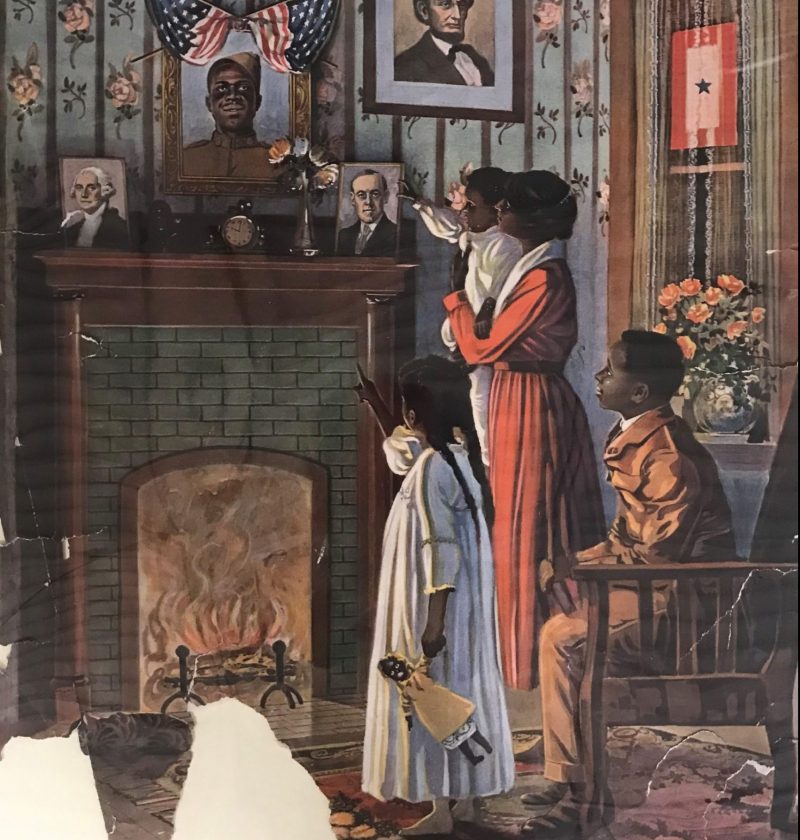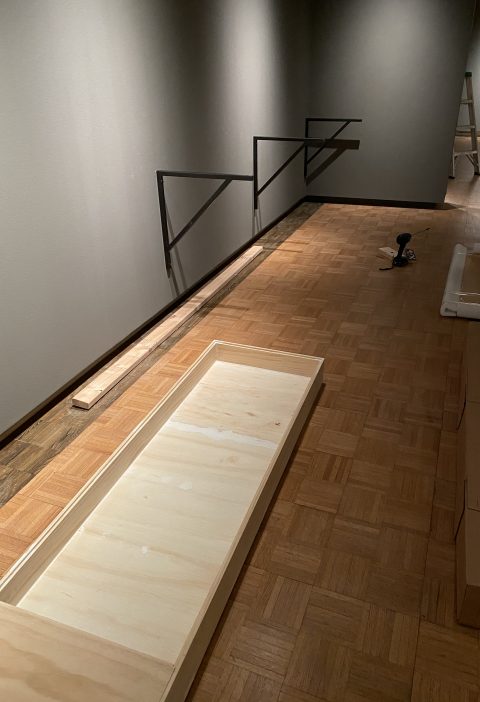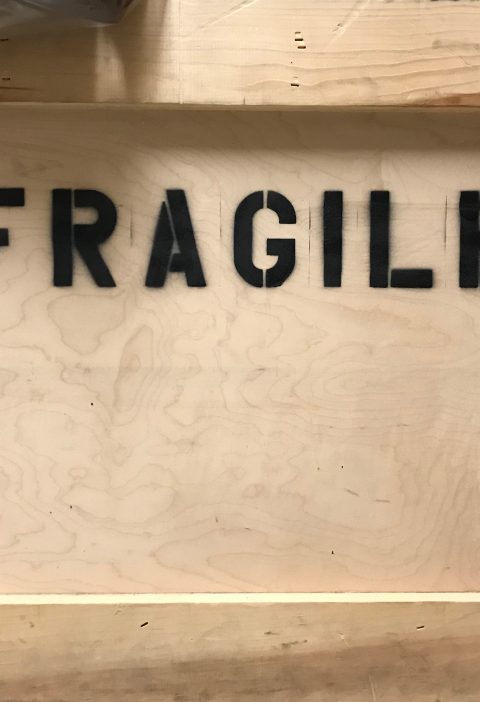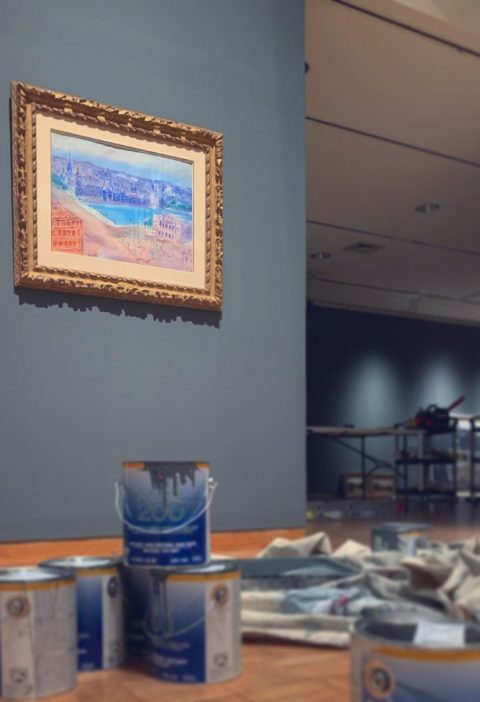Well, it’s been a while since our last Tales from the Vault — things behind the scenes at the museum have been busy with virtual gallery installations, cataloguing, updating collections databases, and matting and framing future exhibitions. Not that I haven’t been thinking about this column during this busy stretch, though. In fact, one item that came to the gallery for an upcoming show was particularly interesting from a conservation perspective. Actually, it’s really two of the same particular item … I’ll explain below.
Our 2021 exhibition Horace Pippin: Racism in War incorporates several African-American war posters, three of which come from World War I. Black soldiers in World War I formed the legendary Harlem Hellfighters, bravely fought the Axis enemies, and overcame overt discrimination to secure vital victories in course of the war. Though posters recruiting young men and honoring their sacrifices were prolific during this time, images that specifically addressed black soldiers and their families were much less common. In preparation for the Pippin exhibition, the Gallery acquired two of these rare African-American WWI posters, The Colored Man Is No Slacker, which reflects the commitment of Black soldiers to the war effort, and True Blue, which shows a symbolic family scene in the home of Black combatant. The Colored Man poster came to us through a print dealer and was in excellent condition; True Blue was acquired through open auction and was in a much more compromised state.
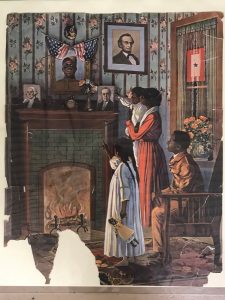
The auction for True Blue was actually for two identical posters, each extensively damaged, though in different areas of the image. One of the prints was missing a substantial portion of the lower left corner, but the remaining print was intact and relatively unmarred. The second poster had complete tear through of the upper right quadrant, with creasing and color loss throughout. Both posters were made of the typical acidic wood pulp paper of the time and were brittle to the touch. Considering the state of the posters, we make a call to our favorite conservator and sent our two new acquisitions off for immediate treatment.
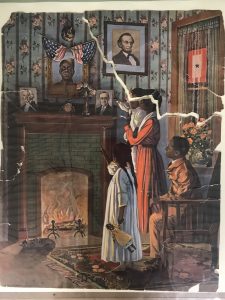
So how do you fix fragile, 103 year-old war posters? The process is quite interesting. First, the conservator cleans the work with a very gentle brush and low suction vacuum to remove surface debris. Then the poster sits in an enclosed space with an ultrasonic humidifier to relax the paper fibers and flatten any curling.
But what about the tears? We’ve all torn paper before that has printing or a photographic image on one side – remember seeing that the edges of the tear look different? Tears have “front” and a “back” while cuts, like from a pair scissors or a blade, usually don’t. The front of the tear retains a portion of the image or color on the edge; the back looks like the raw paper, often white or off-white. Overlap the two edges of the tear the wrong way and you will definitely see the line.
To prevent this from happening during the repair process, the conservator places the poster face down on a sheet of Plexiglas suspended over a mirror. The mirror allows the conservator to see the edges as he resets the two parts of the tear. Lightweight Japanese tissue with wheat starch paste is used to secure the tear from behind. Japanese paper uses non-directional fibers, like those from the Mulberry tree, which makes the thin tissue hard to tear and the perfect material to repair damaged prints. Finally, posters with big tears like ours would be entirely backed with tissue, structurally supporting the print and ensuring that future losses won’t occur. It sounds time intensive and detail heavy … and it is … but the end result is nearly transformational.
Now for the exhibition. Since we have one poster with losses in lower left corner but decent quality in the rest of the image, and second poster with tears in the upper right corner but at least usable lower left region, we are actually considering overlapping the two images to create one complete poster. It’s a first time for many things this year at The Trout Gallery.
More Tales from the Crypt … soonish.
James Bowman
